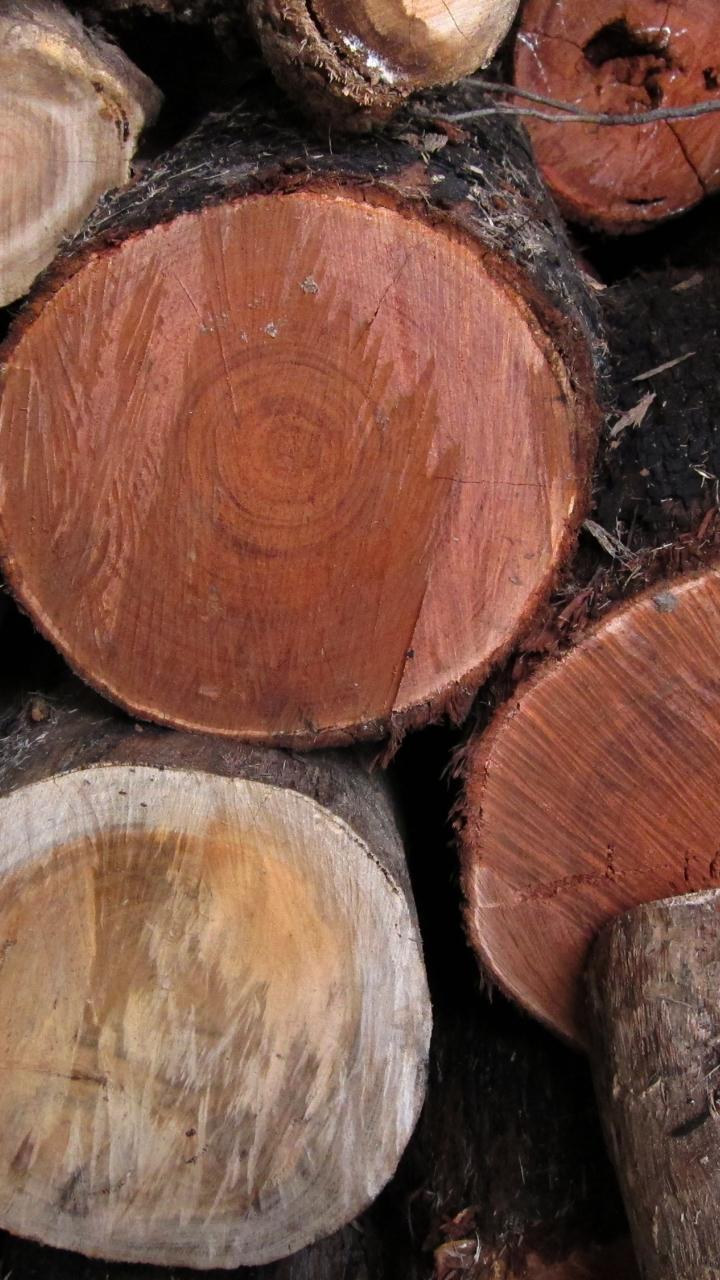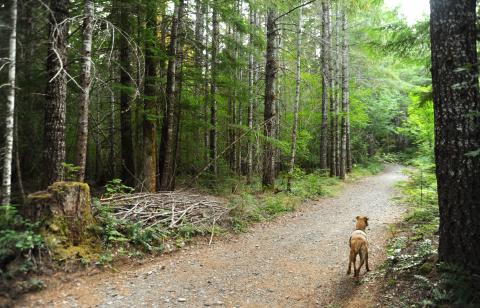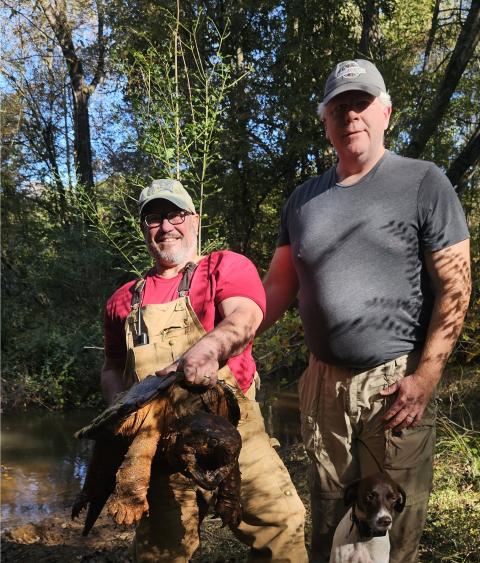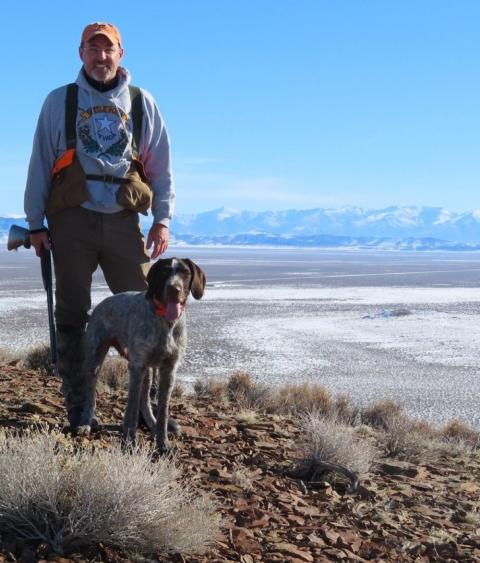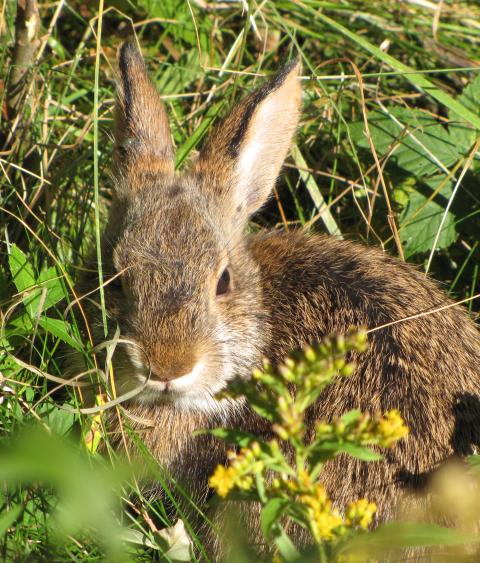Breadcrumb
- Home
- Outdoor News Bulletin
- October 2025
- Conservation Through The Lens of Lifespan
Outdoor News Bulletin
Conservation Through the Lens of Lifespan
I try to get out in nature in some shape or form every day. I stumble around in wild settings seeking to make observations and discoveries unique and novel to me, let my dog do the same, and contemplate this journey we call life. Recently while meandering through a high-altitude coniferous forest near my home, I noted how my route, out of necessity, had changed through time because of downed trees, soil erosion, and other gradual changes in the biotic and physical environments. I considered how long I had been coming to this place and the changes I had witnessed as a result. I looked at large stumps of felled giants of which neither trees of equal size nor species now exist in this patch of forest. I see an increasing number of standing dead and dying trees each year as drought stresses, pathogens, and pests take their toll. I see new conifers pushing up and crowding out the aspens in the absence of aspen regenerating fire.
The sum of my contemplations was the conclusion that ecosystems are dynamic and ever-changing but often change in ways we humans struggle to note, understand, or appreciate due to slow rates and seemingly subtle magnitudes. As I was gazing at my small patch of forest, it didn’t strike me as inherently good change or inherently bad change. I wasn’t as focused on the direction of these changes as I was about the variability in the pace of change and humanity’s occasional inability to respond to them. What struck me most was how dynamic these systems are and how difficult it is, unless one is immersed in it on a regular basis, to detect the change, let alone appreciate the drivers of it and consequences from it.
Regardless of where we live or how aware we may or may not be, ecosystems are incredibly dynamic. Systems are constantly changing. Some changes include the proportional abundance of species, levels of biodiversity, disturbance regimes, and more. Some trees grow while other trees die. Soil is formed and lost, water quality and quantity change, our climate changes, invasive species contract and expand, connectivity changes—and all of it impacts habitat suitability and consequently where wildlife choose to live. The paces and magnitudes of change in nature are highly varied, from the pace of soil formation of hundreds to thousands of years to form a single inch of topsoil, to in a matter of just hours, washing away several feet of topsoil. Rates, durations, and magnitudes of change in nature vary greatly.
Although we are intellectually and consciously aware of this, if these changes happen gradually it can be difficult to personally observe and even more difficult to convey the ongoing changes to laypersons, who are neither schooled in the ways of nature nor connected to it in a meaningful way.
100-year Snapshot
As a young field biologist, I was digging through World War II era metal file cabinets and happened across a set of three historic black and white landscape photos taken in 1906. Because they contained precise location descriptions and the exact date of their capture, I thought it would be interesting to locate the photo point and retake the photos from the exact same spot precisely 100 years later to the day. June 20, 1906, versus June 20, 2006, three different directions from the same scenic overlook 100 years removed. I was equally surprised by both how much change some landscapes had undergone with thick trees now where open savannah-like hillsides once existed, as well as how a dead, uniquely shaped and identifiable juniper limb that lay on the ground in the foreground of both photos had a barely noticeable difference in size after 100 winters and 100 summers had come and gone.
One hundred years is a bigger chunk of time than most humans will ever have the opportunity, outside of photos or data, to physically observe environmental change. Most of us will be lucky to experience personal observations of 75 years of change—and that assumes we begin making and retaining our observations at the age of ten, continue to make observations until we are at least 85, and we also have a continued residence or existence in an area that affords us the chance to make such observations within the same space or context over that time span. It’s more likely that our personal observations of the natural world would be limited to fewer than 50 years, at the very best.
Bias of the Human Lifespan
This realization caused me to further consider the biases we bring to our observations that result from the perspective of our lifespan and how lifespan is a lens through which we often perceive change around us and the associated risk of change. We look at the poor mayflies that live for only a day or two as adults, with males living less than an hour after emerging, or the mosquito, whose 14-day lifespan is about 14 days too long by many accounts. We pity these so-called lesser life forms for their puff of smoke like existence, much like the over 200-year-old bowhead whales and over 400-year-old Greenland sharks might pity us. Clonal plants and some trees make Greenland sharks look like longevity-deprived mayflies. A huge colony of the sea grass Posidonia oceanica in the Mediterranean Sea near Ibiza, Spain, is estimated to be between 12,000 and 200,000 years old and a colony of the shrub Lomatia tasmanica in Tasmania is estimated to be at least 43,600 years old. Methuselah, a Great Basin bristlecone pine in the White Mountains of California, has been measured by ring count to be 4,857 years old. It is therefore the oldest known living individual non-clonal tree in the world.
At the recent annual meeting of The Wildlife Society, an indigenous plenary speaker shared some basic conservation philosophies of her people. One of the philosophies shared specifically refenced timeframe in which to consider impacts to nature. They believe seven generations is an appropriate timeframe for which to consider impacts of their nature-related decisions and actions. Today the average lifespan in America is 80 years for females and 75 for males. That means seven generations is roughly 500 years. Although not using a specific duration of time, Gifford Pinchot often emphasized natural resource related decisions that considered “the greatest good for the greatest number for the longest time.” Seven generations, 500 years, or longest time, all seem like productive lenses for us to view our relationship with nature as it relates to our actions and impacts.
Despite these calls for us to consider impacts of our decisions far beyond our life spans, we must first be able to adequately perceive the changes and once perceived, be able to effectively communicate the changes to broader society to effectively act upon them in accordance with either indigenous or Pinchot’s ideologies.
Humans are Fundamentally Bad at Perceiving Change
Humans have difficulty perceiving gradual change, especially when occurring without noticeable disruption. This selective perception, a result of our cognitive system prioritizing certain information over others, means significant gradual changes can go unnoticed.
The science behind the difficulty points to three primary reasons. Change Blindness, which is the primary concept explaining our failure to notice significant changes in visual scenes. It’s a fundamental limitation of human attention, suggesting that not all information can be processed and stored in memory simultaneously, particularly in nature if connection, comprehension, and context specific experiences are lacking. Limited Attentional Capacity, in which our brains have a finite number of cognitive resources, so we don’t consciously process every piece of sensory information. When faced with many stimuli, the brain prioritizes and selectively attends to certain elements, leaving others unnoticed. And, Lack of Disruption, where gradual changes are more difficult to detect than abrupt ones because they lack the sudden shift that demands immediate cognitive attention. Our perception is more attuned to sudden, significant events rather than slow shifts.
Clearly humans as a species are more aware of the sudden significant events but how much of that immediate awareness results from the duration of our lifespan? Perception of change must somehow be related to longevity. The hours long lifespan of the mayfly renders it carefree about next Tuesday’s water and weather conditions, just as our lifespan affords us little concern about the next ice age or the burning out of the sun in 5 billion years, or even the changes in our climate expected to occur over the next 100 to 200 years.
Change, as measured by magnitude and duration, is viewed through the lens of our lifespan whether we are consciously aware of it or not. Efforts to broaden the horizon of consideration are met with significant challenges. Are we biased in our perspectives as a result of our lifespans? Does our lifespan dictate our perception of time and dictate our perception of what constitutes long and short durations or keep us from perceiving or acting on risks to subsequent generations? Perhaps so.
Beyond our Comprehension?
Just as the only-hours-living mayfly would struggle to comprehend our lifespan of 80 years, we too grapple with time frames necessary for comprehension of things like soil formation, geologic processes, climate shifts, and evolution. They happen at scales beyond our comprehension and at paces that make their observation nearly impossible with the span of a human lifetime.
Oversimplified, a local and rapid change of significant magnitude, like a flood or wildfire, are easily observed and their impacts are obvious. More widespread change at a very slow pace, like climate change, invasive species, or disease, may occur at a pace that obscures discovery and undermines appreciation and understanding of their significance.
A slow rate of change may convey the existence of more than adequate response time, leading to inaction and a reduced sense of urgency or importance. Slow rates of change might go completely undetected for many of the reasons mentioned above or if detected may feel less impactful. Slow rates of change over long periods of time can cause us to miss or undervalue meaningful changes, despite long term impacts of profound magnitude and significant risks.
Intellectual Blind Spot
Purely from an evolutionary perspective, human nature and our disproportionate attunement to significant events is intuitive. However, paying attention to significant events of the day and also paying attention to more subtle long-term trends are not mutually exclusive endeavors. Some in our field have made a career out of studying longer term phenomena. Many others, like me, bring temporal biases to conservation challenges that we would do well to become aware of as we attempt to deliver effective on the ground conservation. Our biases, regardless of where they reside, can impact decision-making, learning, and relationships by causing us to overlook or dismiss critical information.
Being aware of our lifespan-related biases and that just because we haven’t personally experienced or observed the changes doesn’t render those changes unimportant or meaningless. Slow rates of change especially when over long periods and toward unfavorable conditions, should not be interpreted as insignificant or unimportant.
Conservation deserves the long-term, seven generations, 500-year, and longest time perspective. Without it, we put ourselves and subsequent generations in peril.
